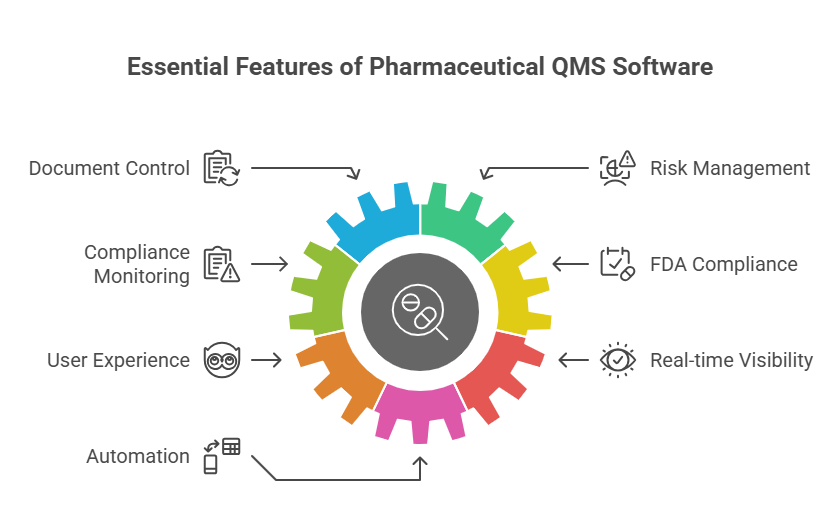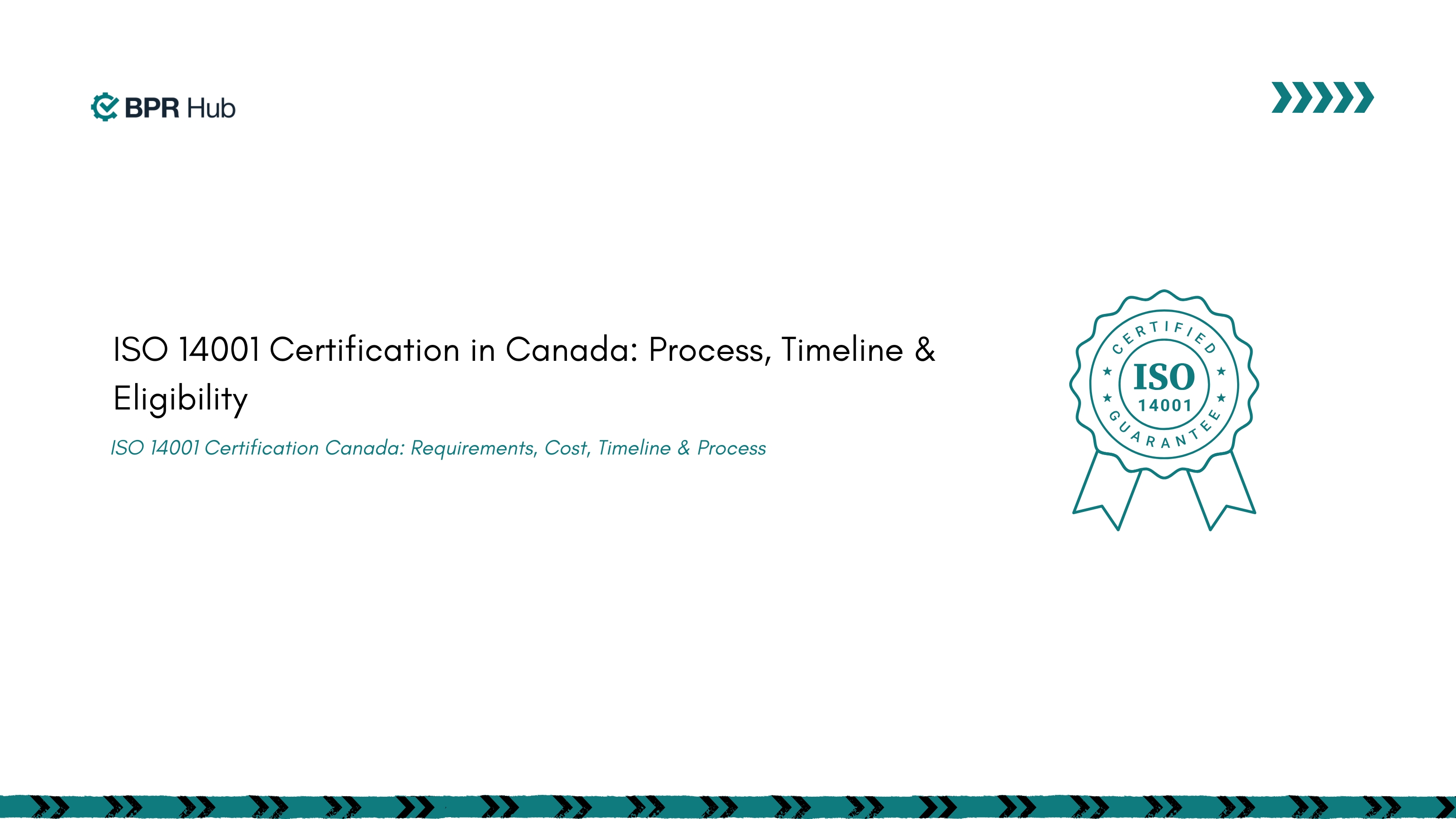Understanding Current Good Manufacturing Practices in Software Implementation
Current good manufacturing practices establish the foundation for pharmaceutical quality and patient safety. These FDA-mandated standards require manufacturers to maintain detailed documentation, implement robust quality controls, and demonstrate consistent product quality throughout the production lifecycle.
Modern cGMP software solutions address the complexity of regulatory compliance by centralizing all quality processes within unified platforms. These systems transform manual, error-prone procedures into automated workflows that ensure continuous compliance while reducing administrative overhead.
Core Components of cGMP Software Architecture
cGMP software architecture centers on three fundamental pillars: document management, process control, and compliance monitoring. Each component integrates seamlessly to create comprehensive quality ecosystems that support pharmaceutical manufacturing excellence.
The architecture emphasizes real-time data capture, automated workflow triggers, and complete audit trails that satisfy regulatory scrutiny. Modern systems leverage cloud-based infrastructure to provide scalable, secure platforms that grow with manufacturing operations while maintaining validation integrity.
Document version control, electronic signatures, and automated approval workflows eliminate manual bottlenecks that traditionally slow production. These features ensure that all personnel access current, approved procedures while maintaining complete change histories that auditors require.
How Document Management Systems Support cGMP Requirements
Document management systems serve as the backbone of cGMP compliance by ensuring all procedures, specifications, and records remain current, accessible, and secure. These systems eliminate paper-based processes that introduce errors and create compliance vulnerabilities.
Advanced document management features include automated distribution of updated procedures, role-based access controls, and integrated training management that ensures personnel competency. Electronic signatures provide non-repudiable proof of document approval and execution.
The systems maintain complete audit trails showing who accessed documents, when changes occurred, and why modifications were necessary. This transparency satisfies FDA inspection requirements while supporting continuous improvement initiatives.
What are the Essential Features of Quality Management System Software for Pharmaceutical Companies

Quality management system software for pharmaceutical manufacturing must address unique regulatory requirements while supporting operational efficiency. These platforms integrate document control, risk management, and compliance monitoring within unified interfaces that eliminate data silos.
Successful QMS software implementations combine FDA compliance capabilities with intuitive user experiences that encourage adoption across manufacturing teams. The software should provide real-time visibility into quality metrics while automating routine compliance tasks.
Integrated Document Control Capabilities
Document control represents a critical component of pharmaceutical quality systems, ensuring all personnel access current, approved procedures and specifications. Modern systems automate document lifecycles from creation through retirement, eliminating manual processes that introduce errors.
Advanced document control software features include automated workflow routing, electronic signature capture, and parallel review capabilities that accelerate approval processes. Version control ensures that superseded documents are immediately removed from circulation while maintaining historical records for audit purposes.
Integration with training management systems ensures personnel receive notification of procedure changes and complete required retraining before accessing updated documents. This connection between document control and competency management strengthens overall compliance posture.
Upgrade your compliance, book a BPRHub demo and streamline cGMP today.
📍 Book a Demo
📧 hello@bprhub.com
What are Risk Management Software for Manufacturing Compliance
Risk management software enables pharmaceutical manufacturers to identify, assess, and mitigate quality risks before they impact product quality or patient safety. These systems implement ICH Q9 quality risk management principles through structured, repeatable processes.
The software provides tools for conducting risk assessments, implementing risk controls, and monitoring risk mitigation effectiveness over time. Automated alerts notify quality teams when risk indicators exceed predetermined thresholds, enabling proactive interventions.
Integration with other quality systems ensures that risk management decisions are supported by real-time data from production, laboratory testing, and supplier management activities. This comprehensive approach strengthens decision-making while demonstrating regulatory compliance.
Electronic Batch Record System Integration
Electronic batch record systems eliminate paper-based manufacturing records while ensuring complete compliance with cGMP requirements. These systems guide operators through manufacturing procedures while capturing real-time data that demonstrates process control.
The systems enforce process parameters, require approval of deviations, and maintain complete audit trails of all manufacturing activities. Integration with laboratory systems enables automatic population of test results, reducing transcription errors while accelerating batch release.
Advanced features include real-time process monitoring, automated calculations, and intelligent alerts that prevent quality issues before they occur. This proactive approach reduces batch failures while improving overall equipment effectiveness.
Compliance Management Solutions for GMP Manufacturing Operations
GMP Manufacturing operations require sophisticated compliance management software that addresses the full spectrum of regulatory requirements while supporting operational excellence. These solutions integrate seamlessly with existing manufacturing systems to provide comprehensive compliance oversight.
Modern compliance software platforms automate regulatory tracking, maintain audit readiness, and provide real-time visibility into compliance status across all manufacturing activities. This automation reduces manual compliance burden while strengthening regulatory posture.
Automated Compliance Software for Regulatory Adherence
Compliance software automation transforms reactive compliance approaches into proactive regulatory management. These systems monitor regulatory changes, assess impact on manufacturing operations, and implement necessary procedural updates automatically.
The software maintains comprehensive regulatory libraries, tracks compliance obligations, and generates automated alerts when regulatory deadlines approach. This systematic approach prevents compliance gaps while reducing administrative overhead associated with regulatory management.
Integration with quality systems ensures that regulatory requirements are embedded within operational procedures, creating seamless compliance that doesn't impede manufacturing efficiency.
Manufacturing Medical Devices Under cGMP Guidelines
Manufacturing medical devices follows QSR requirements, while pharmaceuticals follow cGMP requirements that require specialized software capabilities that address both FDA device regulations and international quality standards. These systems must support design controls, risk management, and post-market surveillance activities.
The software provides tools for managing device master records, implementing design controls, and maintaining device history records that satisfy regulatory scrutiny. Integration with supplier management ensures that component specifications and supplier qualifications remain current.
Automated change control processes ensure that device modifications follow proper approval procedures while maintaining traceability between design changes and manufacturing impacts.
Pharmaceutical Manufacturing Process Controls
Pharmaceutical manufacturing process controls demand software systems that ensure consistent product quality while maintaining regulatory compliance. These platforms monitor critical process parameters, implement statistical process control, and maintain complete batch genealogies.
The systems integrate with manufacturing equipment to capture real-time process data, identify trends that could impact quality, and implement corrective actions before quality issues occur. This predictive approach reduces batch failures while ensuring consistent product quality.
Read more about- Understanding Differences and Comparisons: GMP and ISO 13485 Standards
What are the Document Management Software Features for cGMP Manufacturing
Document management software serves as the central nervous system for cGMP manufacturing operations, ensuring that all procedures, specifications, and records remain accurate, accessible, and audit-ready. These systems eliminate paper-based vulnerabilities while accelerating document lifecycles.
Modern platforms provide role-based access controls, automated workflow routing, and real-time collaboration capabilities that transform document management from administrative burden into operational advantage.
Version Control and Document Control Software Benefits
Document control software eliminates confusion caused by outdated procedures and specifications circulating through manufacturing operations. These systems ensure that personnel always access the most current, approved versions while maintaining complete change histories.
Advanced version control features include automated supersession of outdated documents, parallel review workflows that accelerate approvals, and integrated change impact assessments that identify affected procedures. Electronic signatures provide non-repudiable proof of document approval and implementation.
The software maintains comprehensive audit trails showing document access patterns, modification histories, and approval sequences that satisfy regulatory inspection requirements while supporting continuous improvement initiatives.
Training Management Integration with GMP Training Programs
GMP training integration ensures that personnel receive appropriate training on new or revised procedures before implementation. The system automatically identifies affected personnel when documents change and triggers required retraining activities.
Training management features include competency tracking, automatic training record updates, and integrated testing capabilities that verify understanding before granting document access. This connection between document control and personnel qualification strengthens overall compliance posture.
Automated training notifications, progress tracking, and completion reporting eliminate manual administrative tasks while ensuring that training requirements never fall through organizational cracks.

Quality Control Software Implementation in Manufacturing Software Systems
Quality control software transforms reactive quality approaches into proactive systems that prevent quality issues before they impact products or patients. These platforms integrate seamlessly with manufacturing software systems to provide comprehensive quality oversight across all operations.
Modern implementations leverage artificial intelligence and machine learning to identify quality trends, predict potential issues, and recommend corrective actions that maintain product quality while optimizing manufacturing efficiency.
QMS Software Integration with Existing Systems
QMS software integration eliminates data silos that traditionally fragment quality information across multiple systems. Modern platforms provide robust APIs and integration capabilities that connect with ERP systems, laboratory information management systems, and manufacturing execution systems.
This integration enables real-time data flow between quality and operational systems, ensuring that quality decisions are based on current, accurate information. Automated data synchronization eliminates manual data entry while reducing transcription errors that could compromise quality decisions.
The unified approach provides complete visibility into quality metrics across all manufacturing activities, enabling data-driven decisions that balance quality requirements with operational efficiency.
Audit Management Software for Compliance Tracking
Audit management software streamlines internal and external audit processes while maintaining continuous audit readiness. These systems automate audit planning, execution, and follow-up activities while providing complete audit trail documentation.
The software provides tools for scheduling audits, assigning audit teams, and tracking audit findings through resolution. Automated workflow routing ensures that corrective actions receive appropriate attention while management oversight prevents issues from languishing without resolution.
Integration with other quality systems enables auditors to access relevant quality data, review compliance status, and identify potential areas of concern before conducting on-site assessments. This preparation improves audit efficiency while demonstrating organizational commitment to quality.
What are the Specialised Solutions for Pharmaceutical QMS Requirements
Pharmaceutical QMS systems require specialized capabilities that address the unique regulatory landscape of pharmaceutical manufacturing. These platforms must support FDA, EMA, and other global regulatory requirements while maintaining operational efficiency.
The systems integrate seamlessly with existing pharmaceutical infrastructure while providing the flexibility to adapt to changing regulatory requirements and business needs.
cGMP Compliance Monitoring and Reporting
cGMP compliance monitoring transforms reactive compliance approaches into proactive regulatory management. Modern systems provide real-time dashboards that display compliance status across all manufacturing activities, enabling immediate identification of potential issues.
Automated reporting capabilities generate regulatory submissions, management reports, and trend analyses that support continuous improvement initiatives. The systems maintain complete audit trails that demonstrate systematic compliance implementation while identifying opportunities for process optimization.
Integration with manufacturing systems enables automatic capture of compliance data, eliminating manual data collection while ensuring data accuracy and completeness.
Quality Management Software for Life Sciences
Quality management software designed for life sciences addresses the complex regulatory environment while supporting operational excellence. These platforms provide comprehensive quality capabilities that span from research and development through commercial manufacturing.
The software supports ICH guidelines, FDA regulations, and international standards while providing the flexibility to adapt to changing regulatory requirements. Automated workflows ensure that quality processes follow approved procedures while maintaining complete documentation.
Advanced analytics capabilities identify quality trends, predict potential issues, and recommend corrective actions that prevent quality problems while optimizing manufacturing performance.
Selecting the Right Compliance Management Software for Your Organization
Compliance management software selection requires careful evaluation of organizational needs, regulatory requirements, and integration capabilities. The right platform transforms compliance from reactive firefighting into proactive competitive advantage.
Successful implementations balance comprehensive functionality with user-friendly interfaces that encourage adoption across manufacturing teams while maintaining regulatory rigor.
Key Features in Quality Management System Software
Quality management system software must provide core capabilities that address document management, risk assessment, corrective actions, and audit management. These features work together to create comprehensive quality ecosystems that support regulatory compliance.
Essential features include automated workflow routing, electronic signature capture, real-time reporting capabilities, and integration with manufacturing systems. The software should provide configurable dashboards that display relevant quality metrics while enabling drill-down analysis of specific issues.
Advanced platforms leverage artificial intelligence to identify quality trends, predict potential issues, and recommend corrective actions that prevent quality problems while optimizing operational performance.
Integration with Pharmaceutical Software Platforms
Pharmaceutical software integration eliminates data silos while ensuring that quality decisions are based on comprehensive, real-time information. Modern platforms provide robust APIs that connect with ERP systems, laboratory systems, and manufacturing execution platforms.
This integration enables automatic population of quality data, reduces manual data entry errors, and provides complete visibility into quality status across all manufacturing activities. The unified approach supports data-driven decision making while maintaining regulatory compliance.
How BPRHub Helps with cGMP Compliance
BPRHub's comprehensive Quality, Compliance, and Governance platform revolutionizes cGMP compliance management by centralizing all regulatory requirements within a unified, intelligent system. The platform transforms complex pharmaceutical compliance from overwhelming administrative burden into streamlined competitive advantage.
With automated document management systems, real-time compliance monitoring, and integrated risk management capabilities, BPRHub ensures your pharmaceutical operations maintain continuous audit readiness while accelerating time-to-market. The platform's Unified Compliance Framework manages over 30 regulatory standards simultaneously, eliminating duplicate workflows that traditionally consume valuable resources.
BPRHub's intelligent automation captures quality data in real-time, generates regulatory reports automatically, and provides predictive analytics that identify potential compliance issues before they impact operations. This proactive approach reduces regulatory risk while freeing your team to focus on innovation and growth.
The platform's electronic batch record systems integrate seamlessly with existing manufacturing infrastructure, providing complete traceability from raw materials through finished products while maintaining FDA compliance throughout the process.
Ensure FDA audit readiness. Start your free BPRHub trial now.
📍 Book a Demo
📧 hello@bprhub.com
Key Takeaways
→ cGMP compliance software transforms reactive regulatory management into proactive competitive advantage through automated workflows and real-time monitoring
→ Quality management system software integration eliminates data silos while providing comprehensive visibility into compliance status across all manufacturing activities
→ Document management systems serve as the foundation for pharmaceutical compliance by ensuring current procedures, maintaining audit trails, and automating approval workflows
→ Electronic batch record systems eliminate paper-based vulnerabilities while providing complete manufacturing traceability that satisfies FDA inspection requirements
→ Risk management software enables proactive identification and mitigation of quality risks before they impact product quality or patient safety
→ BPRHub's Unified Compliance Framework centralizes pharmaceutical compliance management while reducing administrative overhead and accelerating regulatory submissions
FAQ
Q. What is the cGMP compliance program?
The cGMP compliance program is a comprehensive system implementing Current Good Manufacturing Practice regulations that ensure pharmaceutical products are consistently produced and controlled according to FDA quality standards. The program encompasses document control, personnel training, facility maintenance, equipment qualification, and process validation. Modern compliance management software automates these requirements through integrated workflows that maintain continuous audit readiness while reducing administrative burden.
Q. What are the 5 P's of cGMP?
The 5 P's of cGMP are Personnel, Premises, Processes, Products, and Procedures. Personnel must be qualified and trained; Premises must be designed and maintained appropriately; Processes must be validated and controlled; Products must meet specifications; and Procedures must be written, approved, and followed. Quality management system software addresses all five P's through integrated modules that ensure systematic implementation while maintaining regulatory compliance.
Q. What is the GMP compliance system?
The GMP compliance system is an integrated approach to implementing Good Manufacturing Practice regulations through documented procedures, trained personnel, and systematic quality controls. The system ensures consistent product quality through process validation, equipment qualification, and comprehensive documentation. Modern manufacturing compliance software automates these requirements while providing real-time visibility into compliance status across all operations.
Q. What are the 10 principles of cGMP?
The 10 principles of cGMP include: written procedures for all operations, operator training and qualification, record keeping and documentation, facility design and maintenance, equipment qualification and calibration, process validation, quality control testing, stability studies, complaint handling, and recall procedures. All-in-one quality management software implements these principles through integrated modules that eliminate duplicate workflows while ensuring comprehensive regulatory coverage.
Q. What is the difference between ISO 9001 and cGMP?
ISO 9001 provides a framework for quality management systems applicable to any industry, while cGMP specifically addresses pharmaceutical manufacturing regulations mandated by FDA. ISO 9001 focuses on customer satisfaction and continuous improvement; cGMP emphasizes patient safety and product quality. Compliance management systems can address both standards simultaneously, providing comprehensive quality management that satisfies multiple regulatory requirements while optimizing operational efficiency.
Get insights that help you minimize risks and maximize profits.
Dive deeper into manufacturing compliance with our free resources.
We get it, compliance can get tough.
Here are some additional resources to help.
We get it, compliance can get tough. Here are some additional resources to help.
Get updates in your inbox

.svg)
%20(1).svg)


.jpg)
.jpg)

%20(1).svg)

.avif)

